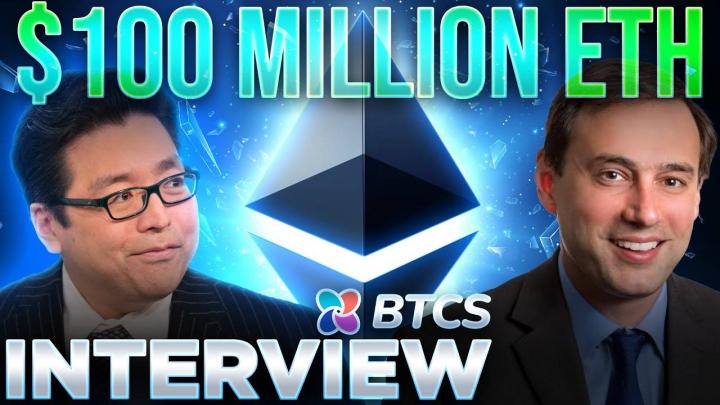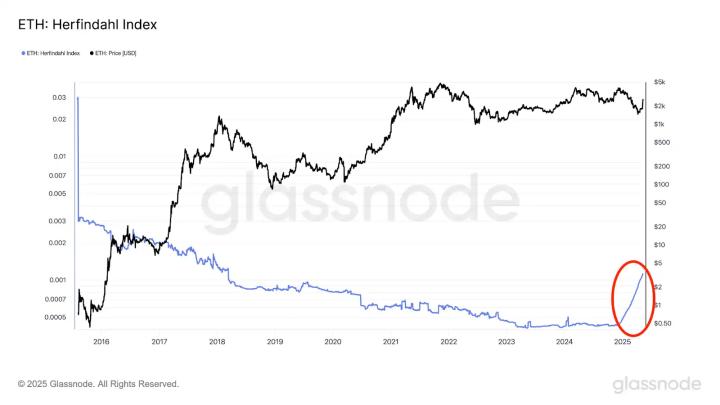Author | Cubone Wu Blockchain
Original Title: Ethereum MicroStrategy's Ten Questions and Answers: Why Do These Companies Choose to Bet on ETH Instead of BTC?
Starting from 2025, four US-listed companies represented by SharpLink Gaming, Bitmine Immersion Tech, Bit Digital, and BTCS Inc. have constructed an "ETH MicroStrategy" different from MicroStrategy's holding pattern by massively purchasing ETH and engaging in on-chain staking. This strategy not only reshaped corporate balance sheet structures but also promoted Ethereum's narrative leap in the capital market. This article systematically combs through the core logic of these four companies in terms of funding paths, on-chain deployment, strategic motivations, and risk governance around ten key questions.
[The rest of the translation follows the same professional and precise approach, maintaining the original structure and technical terminology]Bitmine: Recently disclosed holdings of 300,657 ETH, with a total market value exceeding $1 billion, an average purchase price of approximately $3,461.89, funded by a private placement completed in early July; however, its on-chain address and staking details remain undisclosed.
Overall, SharpLink provides the most comprehensive disclosure of profitability and on-chain transparency, while the other three companies, though not revealing addresses, offer key information in their financial reports, forming a basically traceable framework.
Question 7: What is the proportion of ETH in these companies' asset structures? Has it become a core reserve?
According to the latest data, as of July 2025, the current market value of ETH for SharpLink, Bitmine, Bit Digital, and BTCS (calculated at approximately $3,573 per unit) is about $1.278 billion, $1.074 billion, $429 million, and $114 million, respectively. Compared to their latest estimated market values (29 billion, 34 billion, 12.3 billion, and 153 million dollars), the ETH asset proportions are approximately:
• SharpLink: About 44%
• Bitmine: About 32%
• Bit Digital: About 35%
• BTCS: About 74%
It should be noted that the rapid increase in ETH proportion for these companies may be partially influenced by on-chain narrative heat, potentially involving market behavior that leverages topic effects to drive valuation. In the absence of stable operating cash flow support, the sustainability of such strategies and their risk exposure still depend on further observation of cash flow conditions, financing rhythm, and staking deployment progress in their financial reports.
Question 8: Have these ETH micro-strategies driven stock price increases? What is the market feedback?
As of July 18, 2025, the stock prices of the four US companies implementing ETH micro-strategies have experienced significant increases but also accompanied by sharp declines, with extremely large overall volatility:
SharpLink Gaming (SBET): Stock price started from around $2.58 in late May, reached a high of $124.12 in early June, then sharply fell back, closing at $28.98 on July 18, with a stage-wise pullback of 92.5%. Despite recent increases, it remains far below its peak level.
BitMine Immersion Tech (BMNR): After listing in June, it surged to $161.00 in a short period, falling to $42.35 by July 18, with a pullback of about 73.7%, indicating that the market's initial reaction to its ETH strategy was highly speculative.
BTCS Inc. (BTCS): Rose from a low of $1.35 in April to a high of $8.49, an increase of over 528%, currently closing at $6.57, still relatively high but experiencing rapid adjustments of over 20%.
Bit Digital (BTBT): Stock price rose from $1.69 to $4.49 before falling back to $3.84, with a cumulative increase of about 127%, with multiple pullbacks and significant overall volatility.
Overall, the "ETH micro-strategy" has indeed become the core catalytic factor for short-term stock price surges for these companies. However, due to their generally small size, the on-chain assets' support for valuation is prominent, and market trading is extremely sensitive. SharpLink and BitMine experienced over 70% deep pullbacks in a short period, showing clear high-risk and high-volatility characteristics, with violent price fluctuations caused by concentrated capital inflows and outflows becoming a typical market response to this strategy.
Question 9: What are the main risks of such strategies? Are they sustainable?
These ETH micro-strategies involve multiple risks, primarily including:
First, price and liquidity risks. ETH itself experiences extreme price volatility, and a market deep correction will directly impact enterprise book valuations, especially when staked, making assets illiquid in the short term and exacerbating liquidity pressure.
Second, on-chain risks and re-staking uncertainty. To improve ETH holding yields, companies might participate in on-chain staking or re-staking, which can improve capital efficiency in the short term but introduces risks such as smart contract issues, penalty mechanisms, and validator node errors. If a systemic problem occurs in the on-chain ecosystem, it could cause staked asset devaluation or unavailability in a short time, affecting financial stability.
Third, financing structure risks. Currently, most companies rely on at-the-market (ATM) equity issuance mechanisms to fund ETH purchases. Such continuous equity financing will face efficiency decline or financing interruption when the market cools, while also risking dilution of existing shareholders' equity.
Additionally, as the number of validators grows, PoS yield downward pressure is gradually emerging. If on-chain yield rates continue to decline while the company's finances have not achieved positive cash flow, it will be difficult to maintain the ETH strategy's yield coverage.
Ultimately, whether the enterprise possesses dynamic position adjustment capabilities, stable financial scheduling mechanisms, and control over the rhythm between on-chain and off-chain operations will determine whether this strategy can truly achieve long-term stable operation.
Question 10: Do these companies have a chance to become the "Ethereum version of MicroStrategy"? Why hasn't a leading format emerged?
Currently, SharpLink and Bitmine have initially formed market recognition as representative companies of the "ETH micro-strategy", but they are still far from truly achieving a global pricing anchor effect similar to MicroStrategy in the Bitcoin market, mainly due to the following reasons:
First, ETH's asset attributes are more complex. Unlike BTC as a fixed-supply, non-stakable "value reserve asset", ETH has yield attributes and a dynamically adjusted supply mechanism, making it more like a composite financial instrument than a pure reserve asset. This multi-positioning makes it difficult for enterprises to construct a single narrative anchor around ETH.
Second, there are high barriers to on-chain strategy execution. ETH micro-strategies often require companies to operate or host staking nodes, or participate in more complex on-chain yield deployments. The technical complexity and security risks are far higher than simple asset allocation, making it difficult for most companies to replicate at scale.
Third, the current market values of related companies are generally small, with limited financing tools. They have not formed a collaborative mechanism similar to MSTR's "valuation premium + convertible bonds + media narrative", nor established a financial flywheel that can drive secondary market emotional resonance.
Finally, the ETH market currently lacks a "representative enterprise" with high consensus, broad coverage, and strong leverage capabilities. To become a true "Ethereum version of MicroStrategy", it not only needs to continuously accumulate ETH but also form a closed loop across multiple dimensions including financing capabilities, on-chain deployment, narrative control, and valuation transmission.






